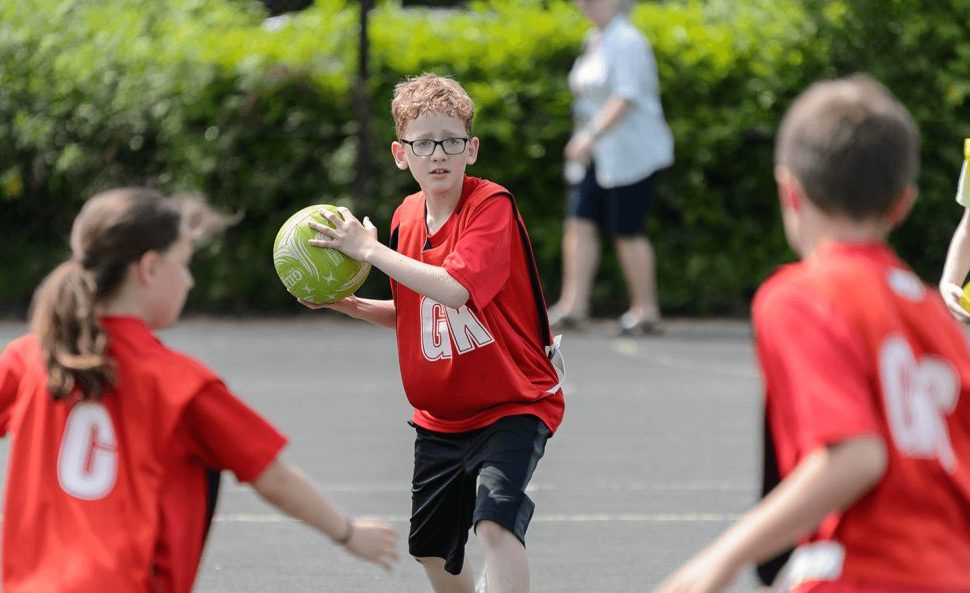Recent data has revealed that less than half of children, both in London and across the UK, are meeting the national guidelines for time spent doing physical activity and sport per day.
Only 47.8% of UK children take part in the Chief Medical Officer’s recommended amount of at least one hour of physical activity or sport each day, Sport England’s Active Lives Children and Young People 2023/24 survey has found.
Several London boroughs have outperformed both the capital-wide (47.3%) and national rates for active children and young people, with Richmond upon Thames scoring highest in England with 62.1%.
Other London boroughs reported concerning higher rates of inactivity (doing less than half an hour of physical activity per day) compared to London (29.6%) and national (29.7%) rates.
These included Bexley (39.2%), Waltham Forest (38%) and Sutton (35.9%).
Annabel Denly, Public Health and Wellbeing Worker for MIND charity said: “Physical activity is essential for child’s holistic wellbeing and key for physical development, cardiovascular health, injury prevention and weight management, which is important at the moment as our children are suffering from an obesity epidemic especially year 6 age.”
Physical activity is also fundamental for mental health and is proven to stimulate focus, reduce stress, promote healthy habits and even support brain development in children.
Denly added: “Physical and mental health are co-dependent, they are completely interlinked – one cannot exist without the other.
“If children miss out on regular and positive physical activity in early years, it can lead to weaker to psychological resilience and general poorer brain and body health in future life.”
When this survey began in 2017-18 academic year, only 17.5% of children in UK were active for 60 minutes a day or more, so there has been significant increase of 173% to 47.8% in the 2023-24.
However, since the Covid 19 pandemic physical activity levels have stabilised and stagnated, leaving more to be done to inspire and facilitate opportunities for children to get active, especially those from minority backgrounds.
Tim Hollingsworth, Sport England’s chief executive said: “An active early life improves a child’s physical, mental and social health, so it’s unacceptable that fewer than half of children and young people are meeting the Chief Medical Officers’ guidelines.
“The data shows that, for the children whose impressionable early years were defined by lockdowns and lack of activities, attitudes towards sport and physical activity are distinctly negative.”
The worst hit age group is those in school years 3-4 (aged seven to nine) with only 41% in this age group active for at least 60 minutes a day.
Children who were in nursery to school Year 4 (ages four to nine) when the pandemic struck in 2020 have been particularly disadvantaged and remain less likely to have positive attitudes towards activity and have a lower sense of opportunity.
This can be largely linked to the lack of face-to-face interactions during the pandemic, whereby the opportunities of making sporting friendships was reduced, which in some cases these connections can be more important than the activity itself.
There is also significant demographical disparities displayed in the activity levels, such as boys (51%) are move likely to be active than girls (45%).
While those children from higher affluence families are 73% more likely to be physically active than those from low income families.
Nick Pontefract, Sport England Chief Strategy Officer said: “Children and young people from a White or Mixed background are more likely to be active than Black or Asian children.
“More significantly, those with two or more characteristics of inequality are significantly less likely to be active than their peers with no characteristics of inequality at all, with only 40% meeting the Chief Medical Officers’ guidelines compared to 47% of those with one characteristic and 52% with no characteristics of inequality.”
Denly said: “I think schools should place more emphasis on fun interactive games without a focus on the competitive elements of traditional PE to engage all demographics, for example introducing non traditional activities such as yoga and Just Dance video games.
“Physical activity within the school day is just as important, schools could introduce standing desks or outdoor classroom breaks to try and limit excessive sedentary behaviour.”
The latest Active Lives Survey has exposed both the challenges and opportunities in supporting children and young people to lead more active lives.
To address the issues in children’s activity levels in the capital, London Sport has recently published Lets Move London strategy highlighting how they plan to address inequalities and remove barriers to physical activity and help inactive Londoners in deprived communities to move more.
Tim Copley, Director of Physical Activity and Sport Development at London Sport said: “While it’s encouraging to see activity levels remain stable and some progress in reducing inactivity, the data shows persistent inequalities that prevent many young Londoners from reaping the benefits of physical activity.”
The data has further reinforced the need to ensure every young child in London and nationwide has access to safe and inclusive environments to be active in.
Denly added: “It is not impossible to engage these minority and lower income groups, it just takes more support to remove these barriers.
“60 minutes of physical activity a day is a minimum requirement, but the more the better really.”
Featured image courtesy of Sport England





